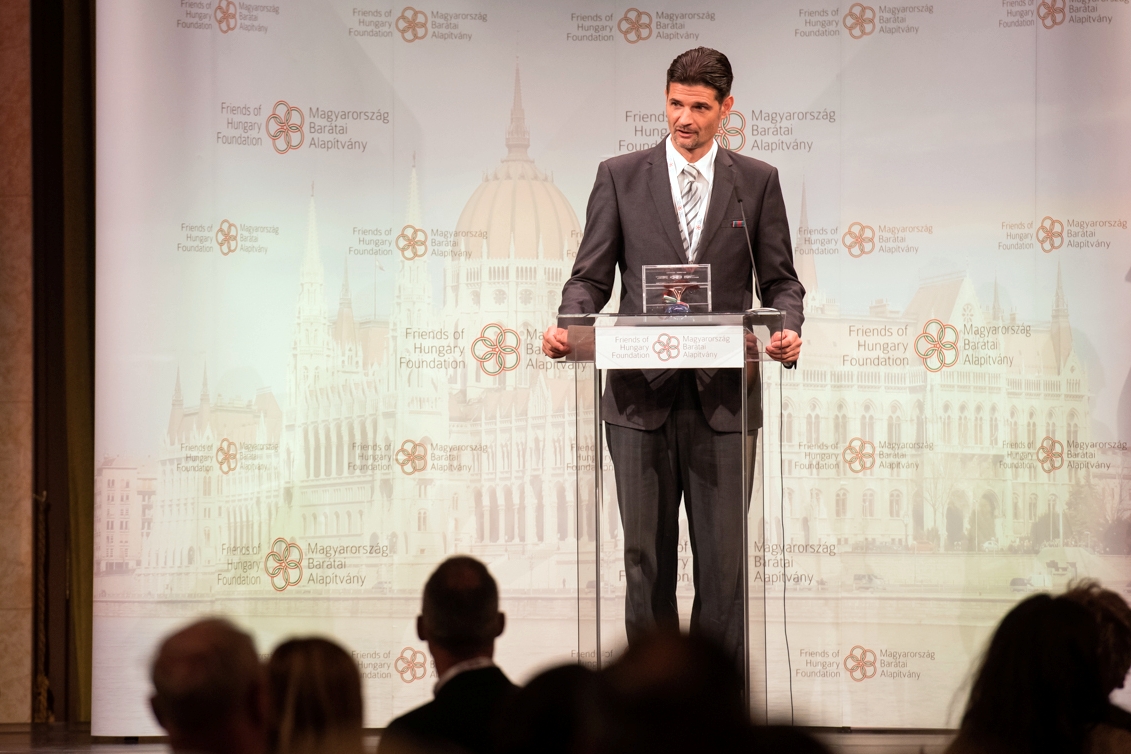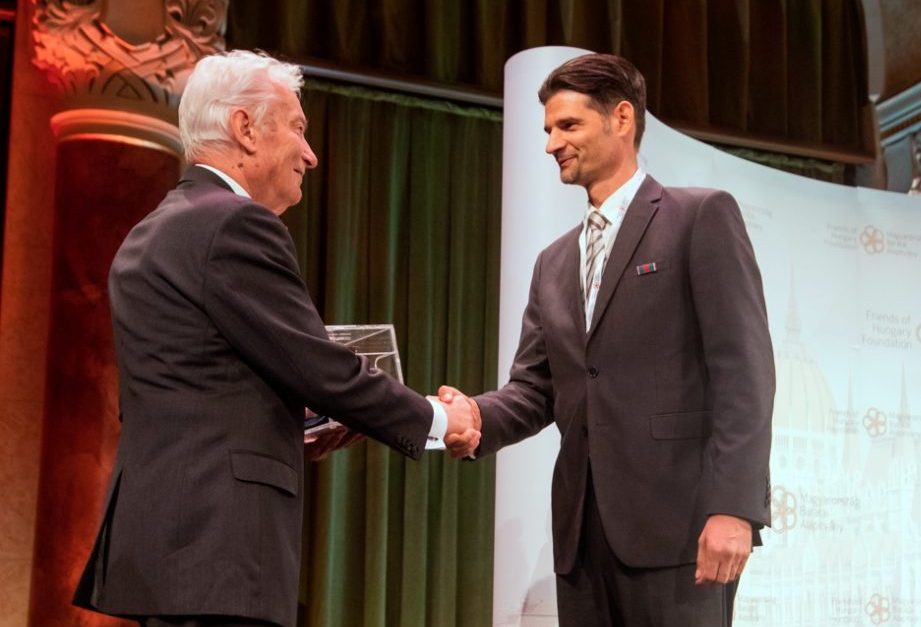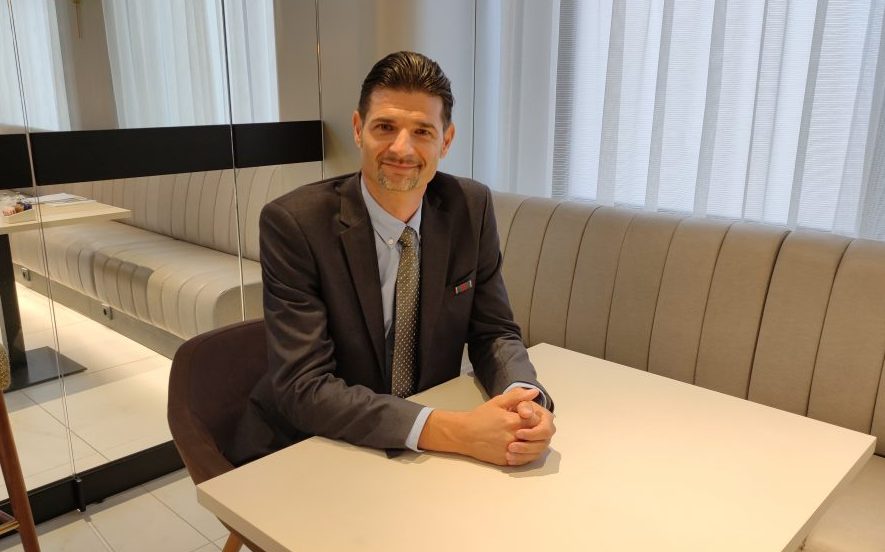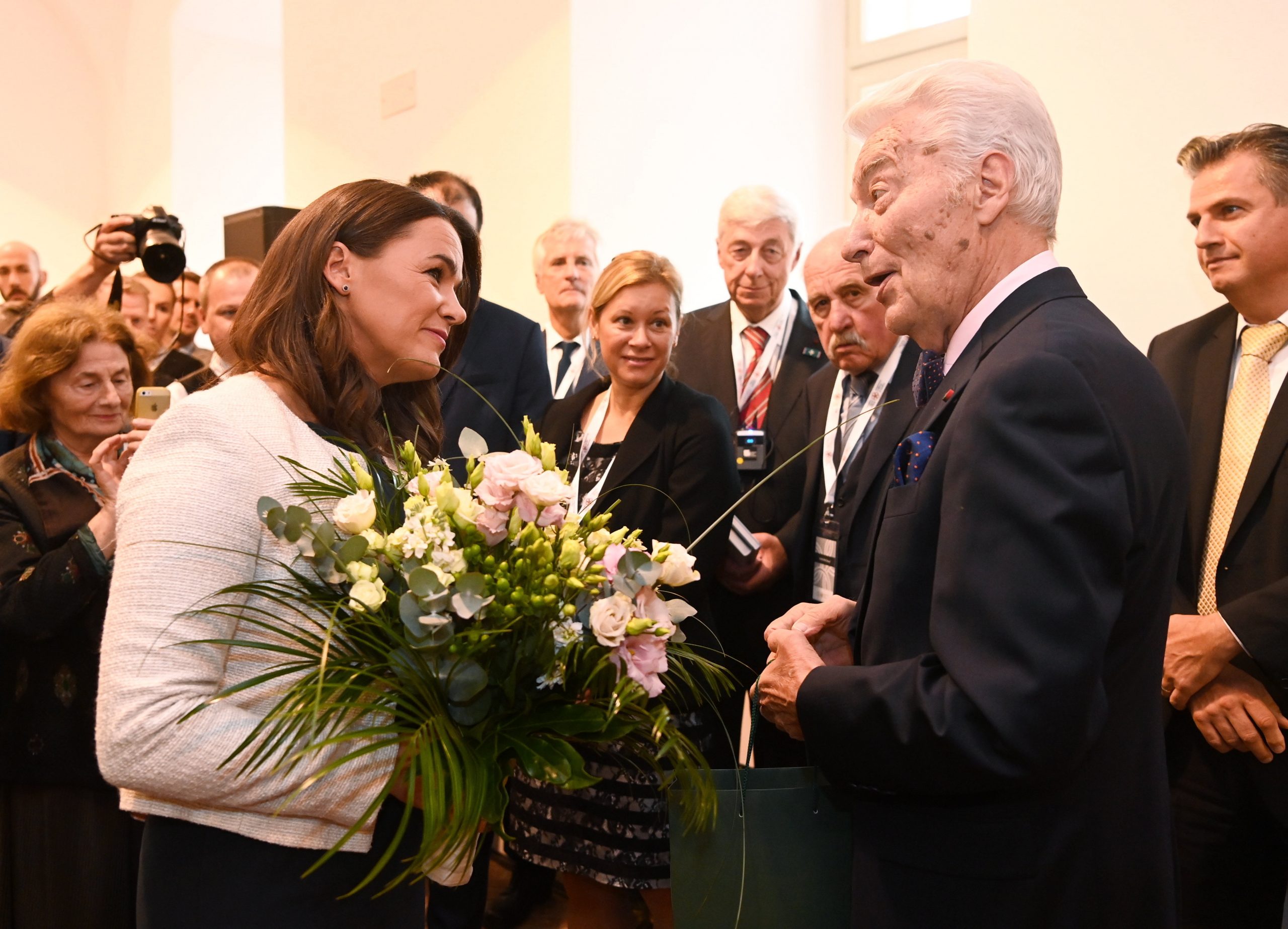[ad_1]

In 2022, the „Friend of Hungary” Award was handed out for the fifth time. One of the awardees is Miklós Czaun, research chemist, senior research fellow, president of the US West Coast Club of Hungarian Scientists, member of the Friends of Hungary Community, who actively contributes to the positive reputation of Hungarian science and Hungary through his outstanding professional and social activities. Miklós Czaun was interviewed at the VIII. Conference of the Friends of Hungary Foundation about his career and activities in the science club.
– Allow me to congratulate you on receiving the “Friend of Hungary Award”. You received this award as the president of the US West Coast Club of Hungarian Scientists. On the East coast of the United States a Science Club had already been founded, followed by the Science Club on the West Coast. Do you think that more Hungarian science clubs are needed in the country?
– First of all, I would like to thank you for the invitation. It is an honor to be interviewed by the news portal of the Friends of Hungary Foundation. Thank you very much for awarding me this prize, it is a great honor. To the question of whether there should be a club of Hungarian scientists on the U.S. West Coast as well as on the East Coast, and whether there should be a third or fourth club, the answer is yes, and there are already more science clubs. The reason why so many science clubs are needed in the US is that the country spans a vast geographic area making this the only possibility to create local meeting opportunities. Sometimes there is even little hope to bring together scientists in the Los Angeles area, because it takes hours to get to a meeting of the Club of Hungarian Scientists due to traffic. Even if we wanted to include Silicon Valley, it would be a very long drive. Therefore, there are Hungarian science clubs all over the country, for example on the East coast there is the New York Hungarian Scientific Society (NYHSS), the Boston Hungarian-American Science Club, the US West Coast Club of Hungarian Scientists and the Hungarian-American Scientists & Innovators in Silicon Valley.

E. Sylvester Vizi, President of the Board of Trustees of the Friends of Hungary Foundation (l.) and “Friend of Hungary” prize awardee Miklós Czaun (r.) Photo: Hungary Today
– You earned your doctorate in Hungary. How did you end up in America at the University of Southern California?
– It was a long road before I came to America, I did not come directly from Hungary. I obtained my master’s degree and my doctorate at the University of Veszprém, but during that time I already travelled abroad. As a third-year student, I had the opportunity to go to the University of Colorado in the U.S. for a month on a research fellowship. During my PhD, I received a six-month fellowship in Sweden, at Lund University. So I had some experience abroad. Nowadays there are many more opportunities for students to gain experience abroad, but back then there weren’t so many.
After my PhD, I worked for the Hungarian Academy of Sciences as a research associate in the petrochemistry research group for a while, but my opportunities were quite limited. For me, it was primarily a professional decision to try my luck abroad. I went back to Sweden, where I already had contacts, and worked on short and long projects in organic chemistry, enzyme modeling, and organometallic chemistry. Then I won a fellowship at Namur University in Belgium, where I was taught by an outstanding Hungarian chemistry professor, László Hevesi. It is thanks to Professor Hevesi and the Hungarian community in Namur that I became more and more involved with the issues of the diaspora. Professionally, I also took on new challenges and began to work in polymer and surface chemistry.
After that, I still didn’t go to Los Angeles, but made a detour to Japan. I applied for a two-year fellowship from the Japanese government (JPSP), which was granted. My time there was very successful, I became an active member of the scientific community, published several papers, and started working on liquid chromatography applications of surface polymerization for the first time. This was of great benefit later in my work in industrial development. Although I felt a kind of culture shock during the first two months, I learned to love the Japanese and their culture, and I look back on that time with great fondness. Before that, I had been to many places in Europe and thought I was prepared for everything, but Asia is different and it took me a while to get used to it. Remember, for example, that I suddenly felt “uneducated” because everything on the streets, in the universities, and in the offices was written in Japanese….
After the Japan fellowship ended, I tried to return to Europe and applied for jobs here. However, I found that there were far fewer English-speaking opportunities in Europe than in America. Overseas, there were ten times as many opportunities. I applied for three of them, in Akron, North Carolina, and Los Angeles. When I won all three, I had to decide where I wanted to go. I chose Los Angeles because the city has a lot to offer.
In Los Angeles, I had György Oláh, a Nobel Prize winner in chemistry and also a founding member of the Friends of Hungary Foundation, as my supervisor. I was most interested in his topics, such as the reuse of carbon dioxide, the production of alternative, renewable fuels, and the provision of renewable energy in the form of chemical energy. I was still in Japan when I decided that I wanted to work on carbon dioxide reuse, and I wrote an application, but it became clear that this was not within the scope of my research group in Japan. Rather by chance, I learned that Professor György Oláh – who until then had not been known for his work on the reuse of carbon dioxide, but for his work on the chemistry of carbocations, for which he received the Nobel Prize – had also become interested in this field.
I knew I had to come here because our interests coincided. I didn’t regret it because I was part of a great team, and the timing was good because they had just received a Department of Energy (DoE) solicitation that provided funding for research, and there was a critical mass of people with the right knowledge who were relatively young and very enthusiastic. There was a lively scientific life, we published a lot, not only experimental but also review articles, which many people referred to and still refer to. It was a fruitful time at the University of Southern California (USC) under the mentorship of Professor Oláh.

Photo: Hungary Today
– Did the idea of the Club of Hungarian Scientists originate in this professional group or was it an independent initiative?
– It really was. The idea to start a science club didn’t originally come from me. I felt the need to create a forum where people with similar interests could come together and share a love and respect for science, but I didn’t think I should organize it at the time. Fortunately, Dr. László Kálmán, Hungary’s Consul General in Los Angeles, suggested that scientists in the region start this club. He gave me the help, the initial push. In 2013, we signed our Memorandum of Understanding in the Council Chamber of the Consulate General. Six months later, in May 2014, the actual founding meeting took place in the clubhouse of the Consulate General’s residence, where 20-25 scientists came together and founded the Club of Hungarian Scientists. The professional interests of the members were very broad, including laser physicists, robotics experts, engineers, mathematicians, several medical researchers, and I myself am a chemist.
Compared to the 20-25 members of that time, the membership of the US West Coast Club of Hungarian Scientists has grown considerably, and today we have 70-75 members. Of course, not everyone attends every meeting, it depends on the topic of the talk, but we can assume that 30-35 people attend each meeting. At our programs, there are usually one or two presentations followed by discussion, sometimes dinner or lunch, but we always leave time for conversation during the breaks. What makes the club so popular is the fact that we offer our members not only the opportunity to develop professionally, but also the opportunity to meet in person and have a nice conversation.
– How did the pandemic influence the work of the Club of Hungarian Scientists?
– Covid made clear how important the US West Coast Club of Hungarian Scientists as a Club is, because when we were forced to return to online meetings, on the one hand the participants changed, the people that joined were not the same anymore who came to the face-to-face meetings and I also had the feeling that the online meetings lost their appeal after a while. Although the topics were good and there were many interesting speakers, there were not that many participants. It lacked personal contacts and we had to accept that the online space could not provide the club-like atmosphere of a science club.
– What does the US West Coast Clubs of Hungarian Scientists do besides organizing meetings?
– Through our network of contacts, we have established a Hungarian-American exchange program. You should know that there are many difficulties to place Hungarian students in American universities, for example for internships or research work. Many of them do not know Hungary, they do not know the universities in Hungary. You need to have contacts with the university in question so that you can negotiate and agree with the management to accept Hungarian students. Fortunately, the club has or had members in important positions in many places, so we have access to the decision makers who can decide about the student exchange program.
One of the challenges to be solved was that for medical students, direct collaboration between universities is no longer possible if patients have to be treated during the internship. Therefore, Hungarian universities had to be convinced to join the Global Health Learning Opportunities, through which collaboration could be developed. The organization of this program required a lot of preparation. We worked on this program for about two years before the first student could come to the US. I would like to take this opportunity to thank my colleagues Dr. János Szenohradszki, Dr. Zsuzsa Reisz and András Frank for their dedicated work on the student exchange program. The University of Pécs was the first to send students, and later the University of Szeged and Semmelweis University joined them. This year, for the third time, sixth-year students came to the University of Southern California School of Medicine in Los Angeles for a clinical internship. Apparently there was a Covid forced break where students could not come, and the students who arrived in 2020 went home about a month earlier than planned because of the pandemic.
– How do you see the perception of Hungarians among academics? How can you as an academic change the image of Hungary?
– I never had the feeling that being Hungarian was a disadvantage, but there were times when it was rather an advantage. We scientists try to evaluate each other objectively, based on what we contribute. It is questionable how this can be measured, e.g., by the number of scientific articles, patents, presentations, or perhaps by the number of scientific societies to which one belongs. We try to judge our colleagues on this basis and not on their political affiliation or origin. In my opinion, science has always been a bridge builder, even when Hungary was forced to live behind the Iron Curtain. Although it was difficult for politicians to agree, even then Hungarian scientists cooperated with Western European or even American scientists, and they understood the language of science.
But to return to today: The Club of Scientists is by nature a non-political organization, and we do not actively engage in politics at the club level. On an individual level, of course, everyone has their own political beliefs and expresses them, but we always ask that they not be brought into the club. We do not address political issues in our presentations precisely because this would not be a cohesive force but a divisive force within the club. However, the members of the Science Club deal with the international perception of Hungary on an individual level. When I see an article in the press that makes unfounded criticisms of Hungary, I tend to bring it to the attention of those who can do something about it, or I do something about it myself. Much can be done to improve Hungary’s image on an individual level, not just in an organized way.
via: Ungarn Heute, written by Enikő Enzsöl ; Featured image: Ungarn Heute
[ad_2]
